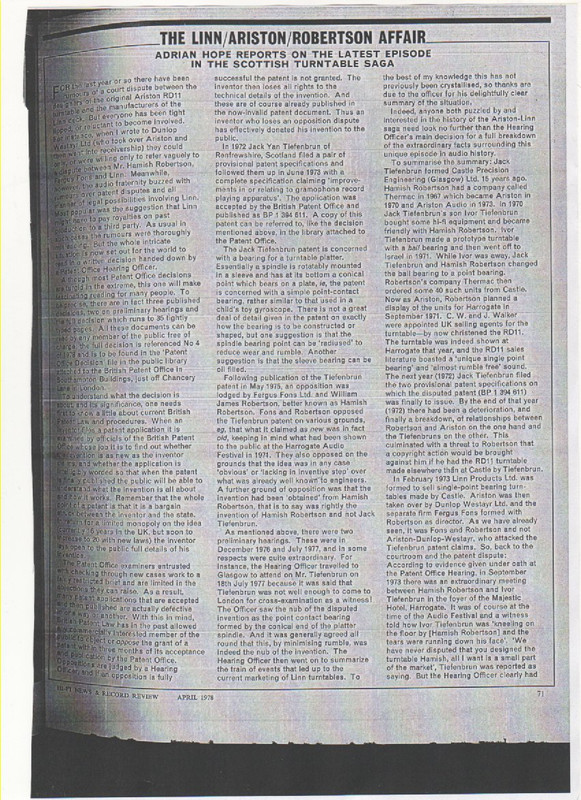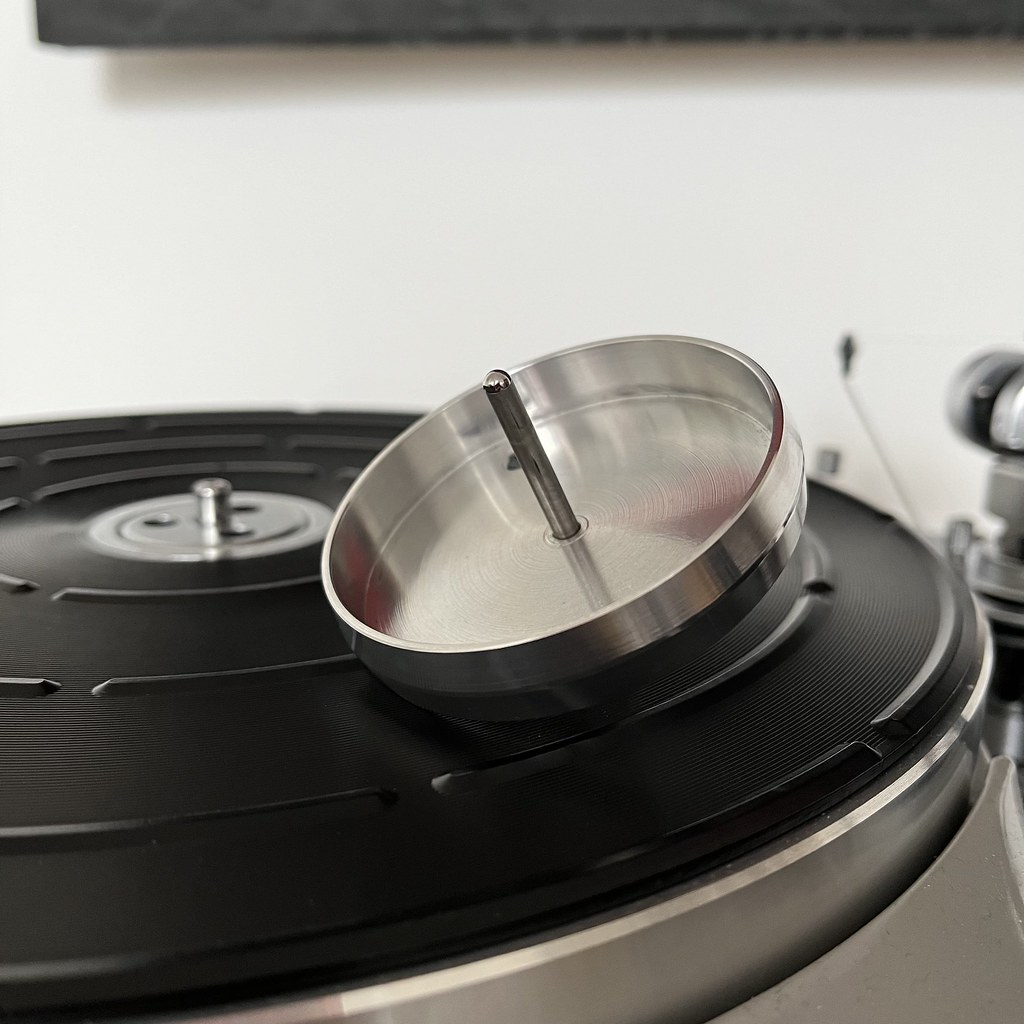This page - right hand column@cre009 Thanks for your researches on this, and for posting them. You say that you consider the patent Hearing Officer to be the best guide. Where can the patent officer's summary of the case be found, though? I've read Barry Fox's articles which you posted, but I haven't been able to find the actual summary by the Patent Officer.

Linnpatent1 — Postimages
"The Officer saw the nub of the disputed invention as the point contact bearing formed by the conical end of the platter spindle. And it was agreed all round that this, by minimising rumble was indeed the nub of the invention. The Hearing Officer then went on to summarize the train of events that led up to the current marketing of Linn turntables. To the best of my knowledge this has not previously been crystallised, so thanks are due to the officer for his delightfully clear summary of the situation.
Indeed, anyone both puzzled by and interested in the history of the Ariston-Linn saga need look no futher than the Hearing Officer's main decision for a full breakdown of the extraordinary facts surrounding this unique episode in Audio History.
To summarize the summary: Jack Tiefenbrun formed Castle Precision Engineering (Glasgow) Ltd. 15 years ago. Hamish Robertson had a company called Thermac in 1967 which became Ariston in 1970 and Ariston Audio in 1973. In 1970 Jack Tiefenbrun's son Ivor Tiefenbrun bought some Hi-Fi equipment and became friendly with Hamish Robertson. Ivor Tiefenbrun made a prototype turntable with a ball bearing and then went off to Israel in 1971. While Ivor was away, Jack Tiefenbrun and Hamish Robertson changed the ball bearing to a point bearing. Robertsons's company Thermac then ordered some 40 such units from Castle. Now as Ariston, Robertson then planned a display of the units for Harrogate in September 1971. C. W. and J Walker were appointed selling agents for the turntable- by now christened the RD11. The turntable was indeed shown at Harrogate that year and the RD11 sales literature boasted "a unique single point bearing" and "almost rumble free sound". The next year (1972) Jack Tiefenbrun filed the two provisional patent specifications on which the disputed patent (BP 1 394 611) was finally to issue. By the end of that year (1972) there had been a deteriation, and finally a breakdown, of relationships between Robertson and Ariston on one hand and the Tiefenbrun's on the other. This culminated with a threat to Robertson that a copyright action would be brought against him if he had the RD11 turntable made elsewhere than at Castle by Tiefenbrun.
In February 1973 Linn Products Ltd. was formed to sell single-point bearing turntables made by Castle. Ariston was then taken over by Dunlop Westayr Ltd. and the separate firm Fergus Fons formed with Robertson as director. As we have already seen, it was Fons and Robertson and not Ariston-Dunlop-Westayr, who attacked the Tiefenbrun patent claims.".




